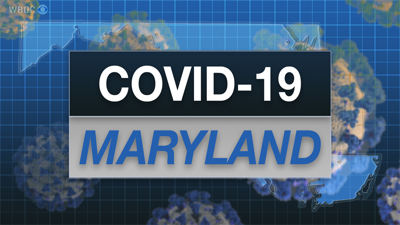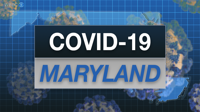During his COVID-19 press conference on Wednesday, March 25, Maryland Gov. Larry Hogan announced that the state's public schools will remain closed through at least April 24, to help prevent the spread of the virus.
Below is a timeline of other actions the governor and state officials have taken in the battle against COVID-19 since the first cases of COVID-19 were reported in Maryland:
March 5: Maryland confirms the first three cases of COVID-19 in the state. All three were passengers on an Egyptian Nile River cruise. Hogan declares a state of emergency, submits a supplemental budget which includes funding for emergency coronavirus preparedness expenses and legislation transferring funds from the state's rainy day fund to go toward efforts to fight COVID-19.
March 6: Hogan directs Maryland insurance commissioner to require all state health insurers to waive any cost sharing co-payments, co-insurance or deductibles associated with coronavirus.
March 9: Maryland has five confirmed cases of COVID-19. The state enacts emergency legislation into law and convenes a coronavirus response team composed of a team of leading doctors and scientists. All out of state travel for state employees is canceled. All state agencies advised to prepare for a period of mandatory telework.
March 10: Maryland has nine confirmed cases of COVID-19.
March 11: After World Health Organization declares COVID-19 outbreak a global pandemic, Maryland moves to an all-appointment system at MVA, restricted access to nursing homes and guidelines are issued for all state veterans facilities.
March 12: First confirmed case of community transmission of COVID-19 in Maryland. The focus is turned from containment to mitigation. The Maryland Emergency Management Agency is ordered to its highest activation level. The National Guard is activated. All non-essential state employees ordered to telework. Access is restricted to state buildings, including the State House. Hogan issues an executive order prohibiting gatherings or events of more than 250 people. All senior activity centers and the cruise ship terminal at the Port of Baltimore ordered closed. Hogan directs all hospitals to immediately implement new visitor policies. Visits to all state prisons are suspended. All public schools ordered closed for two weeks.
March 16: Maryland has 37 confirmed cases of COVID-19. Hogan orders the shutdown of all bars and restaurants, movie theaters and gyms across the state; prohibited any gatherings of more than 50 people; and activated 250 Maryland State Police troopers of the field force to help with enforcement. Hogan also enacts an executive order directing the Maryland Department of Health to conduct an assessment to open closed hospitals and to take other measures necessary to increase the state's capacity by an additional 6,000 beds. Hogan activates the Maryland Medical Reserve Corps and issues an executive order to allow any practitioner who holds a valid out of state or expired medical license the ability to practice in Maryland. Hogan also activates 2,200 members of the National Guard and issues executive orders to prohibit utility companies from shutting off service or charging late fees and to prohibit the eviction of any tenant during the state of emergency.
March 17: Maryland has 57 confirmed cases of COVID-19. Hogan issues a proclamation to postpone the April primary election and directs the state board of elections to implement a vote-by-mail system for the District 7 special election. The state moves to a 100% cashless tolling system statewide and public transportation services are dramatically reduced.
March 18: Maryland reports its first COVID-19 death. Maryland joins other states to ask the federal government for more funds, medical supplies and other support.
March 19: Access to BWI terminal restricted to ticketed passengers and badged airport employees only. Hogan also prohibits gatherings of 10 or more people and orders the closure of all enclosed shopping malls and entertainment venues. The University of Maryland System makes a decision to keep students off all university campuses for the rest of the semester.
March 23: Maryland has 288 confirmed cases of COVID-19. Hogan enacts an executive order closing all non-essential businesses in the state, ramps up enforcement actions against crowds and gatherings, and rolled out a $175 million relief package for Maryland workers and small businesses.
March 25: Maryland public schools ordered to remain closed through at least Friday, April 25. This comes after the state announced a two-week closing period on March 12. Hogan announces that he has formally submitted a presidential disaster declaration for Maryland "to help provide funding for state and local governments, as well as nonprofits for such important initiatives as disaster unemployment insurance, hazard mitigation, and emergency protective measures."
March 26: Maryland now has 580 confirmed cases of COVID-19—an increase of 157 new cases, the largest one-day increase to date. There are more than 1,200 confirmed cases in the National Capital Region—in Maryland, Washington, D.C., and Virginia. President Donald Trump approves a major disaster declaration for Maryland, meaning that federal emergency aid has been made available for the state of Maryland to supplement the state, tribes and local recovery efforts in the areas affected by the coronavirus pandemic.
March 27: All child care programs are required to close as part of the statewide emergency related to COVID-19, according to the Maryland State Department of Education. Only designated essential personnel will have access to child care services established by the state.


